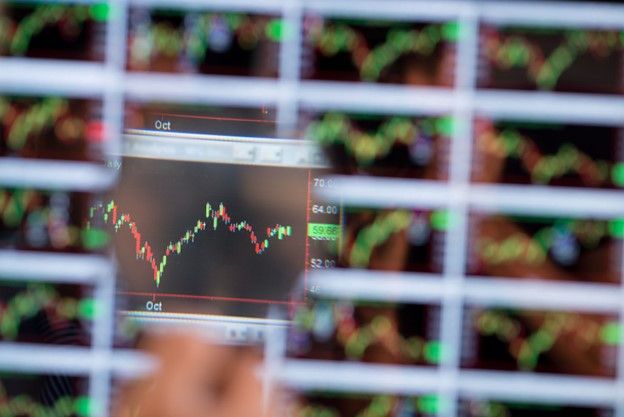Advanced Forex CFD Strategies: Navigating Central Bank Cycles from a UAE Perspective

In the fast-evolving landscape of global financial markets, Forex Contracts for Difference (CFDs) have emerged as a compelling vehicle for speculative and hedging strategies, particularly in the UAE. With the rise of sophisticated platforms and increased retail participation, UAE traders are increasingly looking to global macroeconomic forces to inform their positions.
Among the most influential of these forces are central bank cycles. Central banks dictate monetary policy that directly impacts currency strength, volatility, and investor sentiment. For traders in the UAE, understanding how to navigate these cycles is more than a theoretical advantage—it’s a practical necessity for survival in the modern forex market.
Understanding Central Bank Cycles
Central bank cycles refer to the recurring phases of tightening, easing, or maintaining interest rates and liquidity measures. These cycles are central to the policy frameworks of major monetary authorities like the US Federal Reserve, the European Central Bank, the Bank of England, and others. During a tightening phase, interest rates are increased to curb inflation, often leading to a stronger currency. Easing, on the other hand, involves lowering rates to stimulate growth, which usually weakens a currency.
The Central Bank of the UAE (CBUAE) operates in a unique position due to the dirham’s peg to the US dollar. As a result, the UAE mirrors interest rate changes made by the Federal Reserve. This creates a dynamic where UAE traders must not only consider local economic indicators but also closely follow developments in the US monetary landscape. Explore ADS Securities for further information.
Market Reactions to Monetary Policy Shifts
Markets tend to respond sharply to interest rate decisions, but perhaps more importantly, they often react in anticipation of them. This phenomenon, known as “pricing in,” means that traders adjust their positions ahead of expected policy announcements. As a result, the forex market can become volatile even before any official statement is made.
For example, if inflation data in the US suggests a potential rate hike, traders may begin to strengthen their long positions on the dollar before the Federal Reserve even meets. Conversely, a dovish tone from a central banker’s speech might trigger a selloff in a currency, even in the absence of immediate policy action. Key economic indicators such as GDP growth, employment rates, and consumer price indices serve as breadcrumbs to forecast central bank behaviour.
Advanced Forex CFD Trading Techniques Aligned with Central Bank Trends
One powerful approach is trading based on interest rate differentials. This involves comparing the expected returns of holding one currency versus another. When the spread between two currencies widens due to divergent central bank policies, a carry trade becomes attractive. For example, a UAE trader might long the US dollar while shorting the yen if the Federal Reserve is hiking rates and the Bank of Japan is maintaining ultra-low rates.
Event-driven trading is another popular method. Central bank meetings, rate decisions, and press releases often trigger volatility. Traders can structure positions before these events, using tools like options or CFDs to limit downside risk. However, it’s essential to be prepared for slippage or market gaps, especially during high-impact announcements.
Another nuanced strategy involves positioning based on forward guidance. Central banks increasingly use forward guidance to shape market expectations, even when they’re not actively changing rates. Traders who can decode central bankers’ language—such as subtle shifts in tone or terminology—can anticipate future moves and position accordingly. This is where sentiment analysis tools and economic calendars become crucial, especially for UAE traders keeping an eye on both US and regional developments.
Risk Management Considerations for UAE-Based Forex CFD Traders
Trading during central bank cycles introduces significant volatility, making risk management paramount. High leverage—common in forex CFDs—can amplify gains, but it also magnifies losses. UAE-based traders must be particularly vigilant in setting stop-loss orders and managing position sizes to protect their capital.
Hedging is another layer of protection. Traders anticipating extreme volatility might hedge their primary positions with inverse CFDs or correlated assets like gold or US Treasuries. This is especially prudent when there’s uncertainty around central bank meetings or when multiple banks are set to make announcements within a short period.
Choosing the right broker also plays a key role in managing risk. UAE traders should look for brokers regulated by entities such as the SCA or DFSA, offering transparent fee structures, strong liquidity, and fast order execution. Access to real-time news feeds and research reports can make the difference between a well-timed trade and a missed opportunity.
Conclusion
Navigating central bank cycles is a complex but rewarding endeavour for UAE forex CFD traders. By understanding the policy mechanisms of global monetary authorities and aligning strategies with interest rate trends, traders can anticipate market shifts and position themselves accordingly. From using interest rate differentials and event-driven strategies to employing AI tools and advanced risk management, the modern trader must blend global insight with local advantage.

